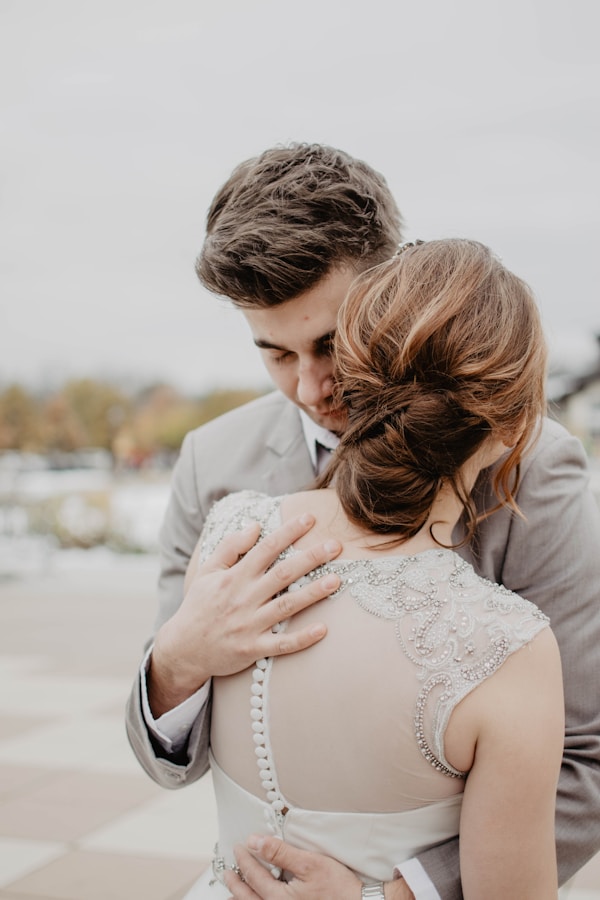Mastering Lace Edges: Techniques to Finish Your Wedding Dress and Prevent Fraying
Understanding Lace Edges on Wedding dresses
When it comes to Wedding dresses, lace edges are often the touch that adds elegance and charm. However, they are also prone to fraying, which can ruin the delicate look of your gown. Understanding the techniques used to finish lace edges is essential not only for seamstresses and bridal designers but also for brides-to-be who wish to maintain the beauty of their wedding gown. In this article, we will delve deep into the various techniques employed to finish lace edges on Wedding dresses, ensuring they remain exquisite throughout the celebration.
The Importance of Finishing Lace Edges
Finishing lace edges serves multiple purposes:
- Prevention of Fraying: Without proper finishing, lace edges can unravel, compromising the overall appearance of the dress.
- Aesthetic Appeal: Neatly finished edges enhance the beauty of the lace.
- Durability: It increases the longevity of the dress, allowing it to be cherished for years to come.
Common Techniques for Finishing Lace Edges
There are several popular techniques used to finish lace edges on Wedding dresses. Below are the most commonly employed methods, each with its specific use and context.
1. Overlocking (Serger Stitching)
Overlocking, or serging, is one of the most effective methods for finishing lace edges. This technique uses a specialized sewing machine known as a serger, which can trim the fabric while simultaneously stitching it. This not only prevents fraying but also gives a professional-looking finish. Overlocking is ideal for lace fabrics that are more delicate.
| Pros | Cons |
| Fast and efficient | Requires a serger machine |
| Clean finish | Can be tricky for beginners |
2. Bias Binding
Using bias binding is another elegant method to finish lace edges. This technique involves encasing the raw edges of lace with strips of fabric cut on the bias. This not only protects the edge but adds a pop of color or contrast, depending on the fabric used. Bias binding is favored for aesthetic purposes as it allows for creativity in design.
3. Hand-stitched Finishing
For those who prefer a more traditional approach, hand-stitched finishing is a classic method. This involves carefully stitching the edges of the lace using a needle and thread. It requires a lot of precision and time but allows for more control over the finished product. Techniques such as a rolled hem or a simple whip stitch can be employed.
4. Fabric Glue or Fusible Tape
For a quick and easy solution, fabric glue or fusible bonding tape can be used to finish lace edges. This is particularly useful for brides who may want to make last-minute adjustments. While it may not provide the same level of durability as other methods, it can be effective for temporary finishes.
5. Fray Check Products
Fray check products are specially formulated liquids that seal fabric edges, preventing them from fraying. Applying fray check to lace edges can provide a quick solution to the problem of fraying, although it is recommended to combine this method with others for an optimal finish.
Choosing the Right Technique
Deciding on the finishing technique for lace edges depends on several factors:
- Type of Lace: Different laces have varying degrees of delicacy.
- Desired Aesthetic: Consider how you want the lace to complement the rest of your dress.
- Time and Skill Level: Some techniques require more time and skill than others.
- Budget: Depending on whether you need to hire a professional or do it yourself, the cost can vary significantly.
Tips for Maintaining Lace Edges
Once you’ve finished the lace edges of your wedding dress, it’s important to care for them to keep them looking pristine:
- Avoid Exposure to Water: Water can cause some lace to lose its shape and color.
- Store Properly: Use a breathable garment bag to prevent dust accumulation.
- Handle with Care: Always be gentle when trying on or adjusting the dress.

Conclusion
Understanding the techniques used to finish lace edges on a wedding dress is essential for ensuring the longevity and beauty of your gown. Whether you choose overlocking, bias binding, hand-stitching, or the use of fabric glue, each method offers unique advantages. Be sure to consider factors such as the type of lace, desired aesthetic, and your own skill level when deciding which technique to use. Proper care and maintenance post-finishing are just as crucial to keeping your lace edges looking flawless. With the right knowledge and techniques, your wedding dress will be the enchanting centerpiece of your special day.